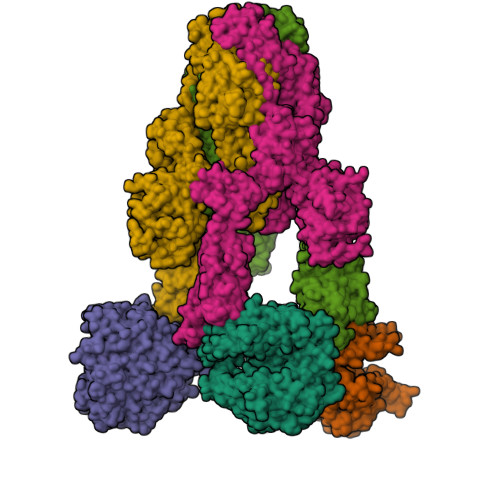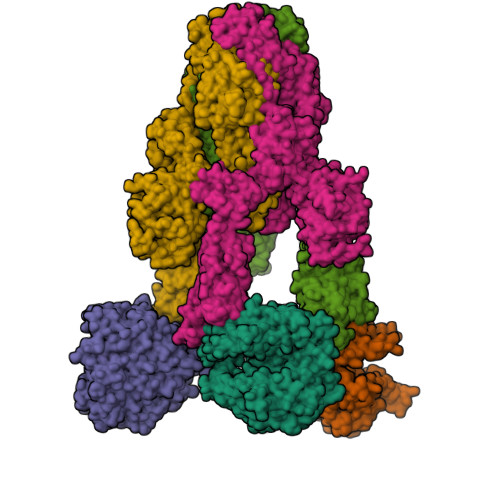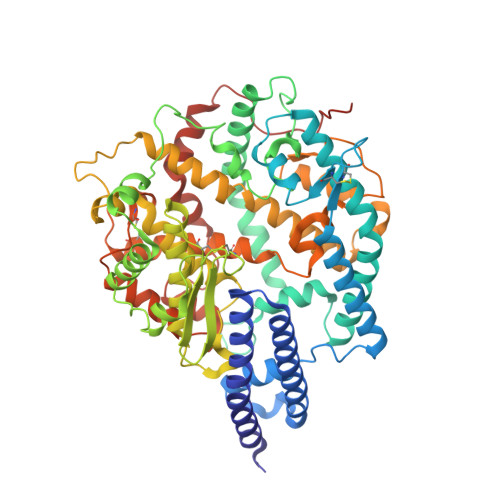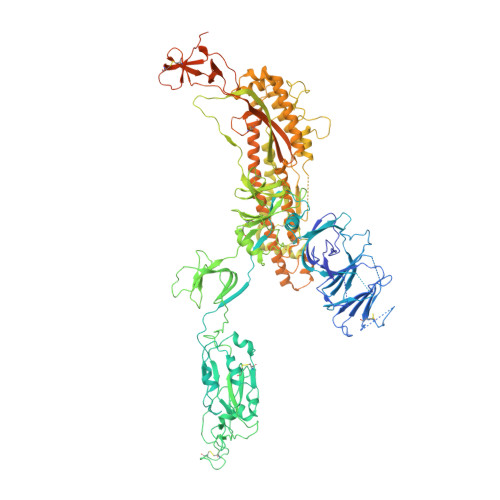Spike structures, receptor binding, and immune escape of recently circulating SARS-CoV-2 Omicron BA.2.86, JN.1, EG.5, EG.5.1, and HV.1 sub-variants.
Li, L., Shi, K., Gu, Y., Xu, Z., Shu, C., Li, D., Sun, J., Cong, M., Li, X., Zhao, X., Yu, G., Hu, S., Tan, H., Qi, J., Ma, X., Liu, K., Gao, G.F.(2024) Structure 32: 1055-1067.e6
- PubMed: 39013463
- DOI: https://doi.org/10.1016/j.str.2024.06.012
- Primary Citation of Related Structures:
8XLV, 8XM5, 8XMG, 8XMT, 8XN2, 8XN3, 8XN5, 8XNF, 8XNK, 8Y16, 8Y18, 8Y5J, 8Y6A - PubMed Abstract:
The recently emerged BA.2.86, JN.1, EG.5, EG.5.1, and HV.1 variants have a growth advantage. In this study, we explore the structural bases of receptor binding and immune evasion for the Omicron BA.2.86, JN.1, EG.5, EG.5.1, and HV.1 sub-variants. Our findings reveal that BA.2.86 exhibits strong receptor binding, whereas its JN.1 sub-lineage displays a decreased binding affinity to human ACE2 (hACE2). Through complex structure analyses, we observed that the reversion of R493Q in BA.2.86 receptor binding domain (RBD) plays a facilitating role in receptor binding, while the L455S substitution in JN.1 RBD restores optimal affinity. Furthermore, the structure of monoclonal antibody (mAb) S309 complexed with BA.2.86 RBD highlights the importance of the K356T mutation, which brings a new N-glycosylation motif, altering the binding pattern of mAbs belonging to RBD-5 represented by S309. These findings emphasize the importance of closely monitoring BA.2.86 and its sub-lineages to prevent another wave of SARS-CoV-2 infections.
Organizational Affiliation:
CAS Key Laboratory of Pathogen Microbiology and Immunology, Institute of Microbiology, Chinese Academy of Sciences (CAS), Beijing, China; Beijing Life Science Academy, Beijing, China.





















